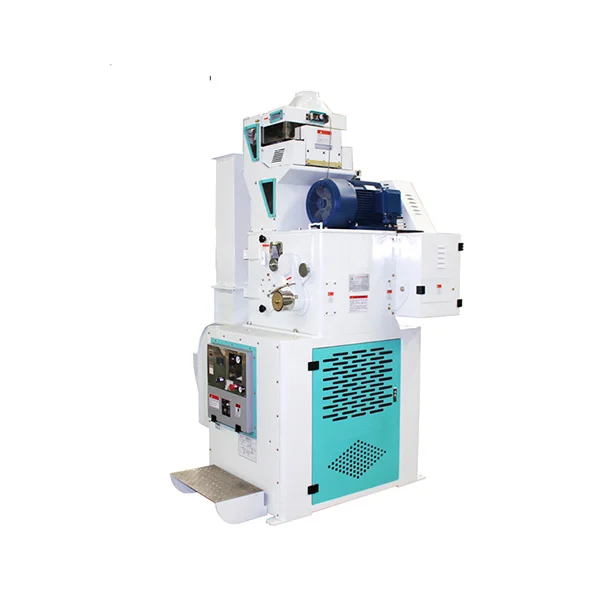Understanding the Rubber Roller Paddy Husker
The Rubber Roller Paddy Husker is one of the most important machines in modern rice milling operations. Designed to remove husks from paddy grains efficiently, this machine integrates automation, stability, and precision to achieve consistent results. Unlike traditional huskers, the rubber roller design prioritizes grain protection, minimizing breakage while maintaining high throughput. Its technological innovations make it a cornerstone of advanced rice-processing plants across the world. In this blog post, ODDLY, as a high performance rice husker machine exporter, will share the advantages of rubber roller paddy husker for sale, its applications, etc.
Automation in Paddy Husking Operations
One of the defining features of the automatic rubber husker machine is its advanced control system. The equipment automatically adjusts the rollers, tightening them when paddy is being fed and loosening them when no feeding occurs. This motion sequence not only ensures operational convenience but also extends the machine’s service life by reducing unnecessary wear. The integration of automatic adjustments makes the husker reliable and user-friendly, especially for operators managing large-scale processing.
Precision Through Linear Control Technology
The paddy dehusking unit incorporates lineal control of tightening pressure between the rollers. By using a barometer and a digital-regulated display, operators can precisely monitor and adjust the feeding volume. This level of control is crucial for maintaining a balance between husking efficiency and grain integrity. It prevents over-tightening, which could damage rice kernels, while ensuring that every batch passes through under consistent pressure. The simplified adjustment system makes this technology accessible even for less-experienced operators.

Vibration Feeding for Higher Capacity
Feeding is a critical stage in rice husking. The vibratory feeder of the Rubber Roller Paddy Husker ensures a steady and uniform flow of paddy into the rollers. Combined with a long feeding chute, this design allows for larger capacities while reducing the chances of grain blockage or uneven flow. The result is improved husking efficiency with lower rates of broken kernels. This design innovation makes the equipment suitable for industrial-scale rice mills that demand continuous high-volume processing.
Belt Transmission for Cleaner Operations
Unlike older husking machines that relied on gearboxes, the synchronous belt-driven husker eliminates oil leakage and reduces noise. With no gears to maintain, the belt transmission system offers smoother power transfer and contributes to a cleaner working environment. The absence of oil contamination also ensures the rice remains pure and hygienic, meeting stringent food safety standards. The low-noise feature adds another dimension of comfort, especially in facilities where multiple machines operate simultaneously.
Structural Innovations for Stable Performance
The dual-support structure of the rice husker represents another technological milestone. This double-supported prop design guarantees smoother transmission and enhanced stability, even under high-capacity operations. By reducing vibration and mechanical strain, the structure prolongs the operational life of the rollers while maintaining consistent husking quality. Mills that prioritize reliability and longevity of equipment recognize the value of this stable framework.
Efficiency and Grain Quality Preservation
Efficiency in rice husking is not just about speed but also about maintaining the quality of the rice kernels. The high-efficiency husking system of this rubber roller machine minimizes broken rice while maximizing throughput. By combining pressure control, vibration feeding, and stable roller alignment, the equipment ensures that kernels retain their shape and nutritional value. This balance between quantity and quality has made the machine a preferred choice in competitive rice markets where premium-quality grains command higher value.
Energy Saving and Cost Reduction
The design of the rubber roller rice husker emphasizes energy efficiency. The synchronous belt transmission requires less energy than traditional gear systems, and the reduced need for lubrication lowers operational costs. Additionally, the automation features minimize manual adjustments, saving labor time. These combined factors lead to lower total operating costs without compromising output, making the equipment an economically viable choice for rice mill owners.
Application in Modern Rice Mills
The paddy husking equipment with rubber rollers is widely applied in modern rice mills of varying scales. Whether in small regional mills or large industrial processing plants, the machine adapts to different production needs. Its scalability and versatility allow operators to integrate it into existing processing lines without significant modification. The machine’s clean operation and consistent performance also support compliance with international food safety certifications, further boosting its global adoption.
Operational Convenience and User Value
User convenience is at the heart of this husking technology. The user-friendly rubber roller husker enables simple adjustment of feeding volume, pressure, and speed. The digital displays and barometer system make monitoring intuitive, reducing the learning curve for operators. Moreover, the automation of roller tightening and loosening reduces downtime and ensures continuous operation with minimal intervention. For mill owners, this translates into reliable productivity and lower maintenance concerns.
Sustainability and Future Outlook
Sustainability is becoming increasingly important in agricultural processing. The eco-conscious design of the paddy husker contributes to cleaner production with reduced oil leakage, lower noise, and energy-saving mechanisms. With continuous improvements in material science, future models may incorporate more durable rollers, further extending service life and reducing waste. As global demand for rice continues to grow, such advancements ensure that milling operations remain efficient, sustainable, and competitive.
Conclusion
The Rubber Roller Paddy Husker stands out as an essential piece of rice milling machinery. Its automation, precision pressure control, vibration feeding system, belt transmission, and stable structure collectively enhance efficiency, reduce kernel breakage, and simplify operations. By balancing technology, user convenience, and grain quality, this equipment delivers significant value to rice producers worldwide. As milling technology evolves, the rubber roller husker will continue to serve as a benchmark in the pursuit of higher efficiency and better grain quality.
www.oddlyricemill.com
ODDLY